The Japanese are still one of the worst people in the world.A look at their diet shows why we can benefit from it.
If we want to lose weight, we often start with strict diets that do not take all strict rules in a few days or weeks.In fact, it is so simple: let's look at the worst people - Japan.
There they respect their food and enjoy.
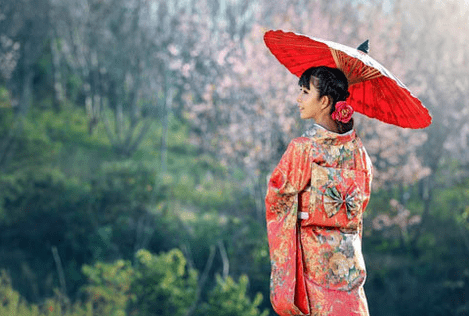
Japanese diet
Travel to Japan.Choosing products
A lotSquirrel: The main ingredients of the Japanese diet are fish, rice and vegetables.As well as soy and fruit.
By closer inspection, it is like
- rich in protein,
- low -fat
- And a diet that does not have gluten.
- FishContains high in omega-3 fatty acids, which are useful.
- VegetablesThey contain vitamins and fill the stomach well.
- Don't be afraid of carbohydrates: At first glance, it seems that with the ubiquitous carbohydrate phobias, that the incredible amount of white rice is eaten in Japan.Obviously, it is not very harmful to the flaws.RiceIt does not contain gluten and contains low fat.
- Soupand fermented dairy products.That they hardly eat in JapanDairy products;
- ThoughCerealsSometimes they are used, for example, in the form of pasta, they are not the main food.
- MeatThey eat much less than fish.
- But the Japanese like itFermented productsLike miso or kimchi.They contain probiotics that are beneficial to the intestine.This, in turn, plays an important role to lose weight.And another thing we can adopt from the Japanese: they eat a lot of soup even for breakfast.
Travel to Japan.Cooking methods
In Japan, food is mainly evaporated, stew or grill.All of these preparation methods are done almost without fat.
Of course, baked foods, such as a popular pace, are also used, but then it is used as a garnish only in small quantities.Delivery and design of the dish is also important in Japan.Asian products are useful, delicious and contribute to weight loss.
Japanese consciously eat
In Japan, food is considered an independent action you have to concentrate with.Food should be eaten slowly and deliberately and enjoy.Therefore, traditionally inedity is "by the way" or "go".It is neither during the walk, the subway, the work, or the TV.Of course, this is not forbidden, but in reality the diet, especially when losing weight, should be considered consciously.This method of absorption of food makes you feel satiety.Because Japan's working days and school days can be very long, it also means that there are longer breaks for food.TooportionsLess in Japan.You will not see a plate overloaded with food.
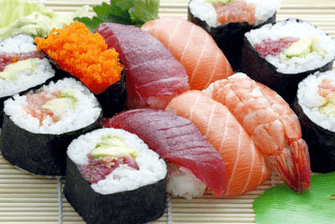
Weight comes with fast food
Slow food (slow food)In Japan trend.If you mimic this, you can deliberately lose weight instead of starving.However, it should be noted that in Japan more and more from the West from new trends :, For example, fast food.Previous habits in food disappear ...
It has consequences: Japanese also recover when they say goodbye to their traditional food!Nevertheless, the country also struggles with it quite strictly, in 2009.Japan took decisive measures against overweight.Medical tests are regularly performed in all municipalities and large companies.Companies should pay more for medical insurance if their employees are overweight or have high blood pressure, high lipid levels or high blood sugar.Given such measures, many Japanese choose to return to Miso-Supa with fish, not in the morning.
How long does the Japanese diet last?
Time and possible weight loss can vary.The Japanese diet should be considered for at least four weeks.This time is sufficient to stimulate fat burning.There are people who have lost3to8Kilogram within four weeks following a diet.The result can be further increased if you start a sports program.
- Many vegetables and fiber are used during the diet.The diet plan submits1200 caloriesper day.
- This is offered mainly rice, fish and vegetables.
- Drinks: A lot of green tea and water.
- Take care of fresh food cooking - no finished products.
- Take sports or workouts to endure.
- Plan enough time to cook.
Talk to your doctor.- Any changes in the diet can cause ailments.The causes are mainly mental in nature and due to low calorie intake.Talk to your doctor if the symptoms are preserved.
Advantages of the Japanese diet
Japanese diet- This is a healthy mixed diet.A lot of attention is paid to fresh products and a balanced dishes composition.
Disadvantages of Japanese diet
- Low calorie intake, it can cause a feeling of hunger and malaise.For people with overweight, total calorie intake can be even too low.
- Cooking fresh dishes can eventually be boring for those who are used to feeding fast food.
- Spontaneous visits to a cafe or restaurants with friends face the choice.
- The diet requires a lot of endurance.
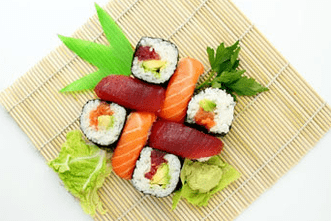
But for those who successfully complete the Japanese diet, they will be rewarded with greater weight loss.
Create a sports program to see great success.Be sure to consume enough protein.Otherwise, you cannot increase muscle mass.In the worst case, you will lose your muscles.Bad sports and other large cargo should be avoided.
Japanese diet.Menu
All food should be fresh.The dishes are beautifully prepared, you can play with flowers.Food and food (slow absorption of food) are also very important.
Breakfast
- 1 Mandarin
- 1 cup of miso.This typical Japanese soup provides a lot of energy, but it is low in fat.By the way, it consists of fish broth, tofu, algae, miso (taste soy paste) and green onions.The recipe below!
- 1 cup of green tea
Dinner
- 1 plate of land (green fish with rice) with soy sauce
- a cup of pasta with mushrooms
- 1 apple
- A cup of green tea
Dinner
- 1 part sashimi (dish from other fish), soy sauce and bazabai (be careful, this paste from water, condemned, is very acute)
- 1 cup of whole grain rice
- 1 orange
- A cup of green tea
In addition, exercises (walking or cycling) are recommended as well as the pleasure of simple, small things.
And now about the "old good times" - let's let the travel time, 1975.
The Japanese are one of the healthiest people in the world with the greatest long life expectancy, which remains harmful due to exemplary nutrition.Currently, Nippon.com has announced a study in which it justifies the cause of good Japanese health with their diet.Nutritionists have been studying Japanese food habits for more than half a century.The result:1975Japanese culinary habits were appreciated by the highest assessments.
Why in 1975The Japanese diet was considered a diet model
For many decades, Japanese culture has been influenced by the Western world, especially Western power habits, and caused diseases such as atherosclerosis and diabetes.A study investigating a Japanese diet with mice for several decades - 2005, 1990, 1975 and 1960.
The result:Mice since 1975Had the best health condition with a diet plan in Japan.This group of mice had the lowest risk of diabetes and healthy liver.
Cause:The average Japanese diet plan this year included a large part of vegetables, fruits, algae and seafood.In addition, 1975The diet was dominated by various methods of fermented spices and greater variety of herbs.In addition, the consumption of juice and sweet soft drinks in Japan was not as common as today - both drinks are considered harmful to health.
After 48 weeks, the researchers found that the mice driven by 1975.The Japanese diet was older and had a better memory than the mice that followed in 2005.Diet.
But is it possible to convey these results to humans?Sendai, a study in Japan, a study "Committee on Ethics of Ethics" in Japan, Der Tōhoku Uni, Sendai, proved that 1975The diet has the same positive impact on people.And a group of participants who followed in 1975.Diet over 28 days, exceeded those who followed 2005.Food plan, indicators.In the first group, cholesterol was lower as well as diabetes risk.Along with one hour of training three times a week in 1975.The diet also reduced stress and increased endurance in a group of 20-30 years.In general, Japanese -style nutrition can also help lower lipid levels in the blood and the fat of the internal organs, which are considered harmful to health due to its metabolic activity.
In summary we can say that1975Japanese powerCompared to modern nutrition in Japan and characteristic Western, food habits are more useful today.This healthier lifestyle and nutrition reduce the risk of diabetes, cholesterol, eventually reduce lipid blood and internal organ fat, and weight loss is a positive side effect.
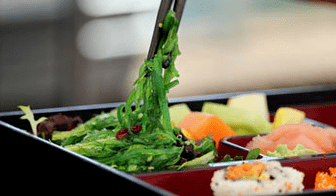
1975Diet together with regular exercise contributes to weight loss.
- Diversity:The daily menu usually consists of many small different dishes served with soup and rice - instead of one large main dish.
- Preparing:The most popular three types of dishes prepared in 1975.The warmth and baking of freedom were used less frequently.This form of the preparation has the loss of the most important nutritional value in the heat.For example, fatty fish, such as cod, contain important omega-3 fatty acids.After baking, the fish contains only a third of the initial fat compared to green fish such as Sashim.
- Ingredients:1975The diet is particularly abundant with soy products, seafood, tubers and green and yellow vegetables (including Rnicons), fruits, algae, mushrooms and green tea.Eggs, dairy products and meat were also consumed in 1975, but only on average.
- Spices:Instead of salt and sugar taste, soy sauce, vinegar and sake are used fermented spices and fish broth.
Soup Miso- It is a Japanese national dish, fast preparation and very fragrant.The main recipe contains very few ingredients - you can enrich it the way you want.Miso-Sup is often eaten for breakfast in Japan, but also as a snack or garnish.Filling the soup becomes the main course.
As a soup base you will need only two ingredients:
Mizopastasta:This paste consists of soybeans and, given the variety of cereals such as rice or barley.The ingredients are salted and fermented in barrels using the so -called Coya form.There are light and dark, sweet and spicy must of must.Thus, the choice of diversity has a great influence on the taste of miso soup.Mizopasta is considered very useful because it contains probiotic milk bacteria formed during fermentation.Dasha:Japanese fish broth is prepared from the fight against seaweed and dried bonite flakes (mackerel or tuna type: Katsuo-Bushi-Katsuo-Busi).You can use dried Shiitac and possibly food or enoki mushrooms, not bonite flakes, if you want to prepare the miso vegetarian soup.
Miso Soup: Basic Recipe
For four small miso soup portions you will need the following ingredients:
- 750 milliliters Dasha
- Approximately two or three tablespoons of miso paste
Use the Miso-Poste chosen: In addition to soy, Shiro-Miss is also rice and has a rather soft and sweet taste.The darker varieties of miso, such as Genma or Hatcho Miso, are sharper.
How to cook miso soup
-
Preheat Dasha broth, but do not cook.
-
Skip the must-poan through a sieve and mix well with the broth.First, use only a part of the quantity as Paste Miso has a very salty taste.Try the soup and add more to the Miso pastes if necessary.
-
After a few minutes, add the selected ingredients to the wrong Sup.Serve the finished soup in bowls.By the way, in Japan, the soup is eaten with sticks for food, and then the broth is drunk in a cup.
Miso Soup Recipe: Accessories and Spices
You can prepare a variety of ingredients for the sons.In Japan, much attention is paid to the fact that the ingredients are evenly cut - so the finished soup looks very beautiful.Here are some examples of how to enrich Soup Miso:
- Cooked rice or paste (for example, buckwheat dog noodles)
- Tofu cut cubes
- Onions or green onions cut into thin rings
- Mushrooms, finely chopped
- Kohlrabi, finely chopped
- Snow sections
- Leaf spinach, park choi or mangold
- Fried vegetables such as broccoli, pepper or carrot
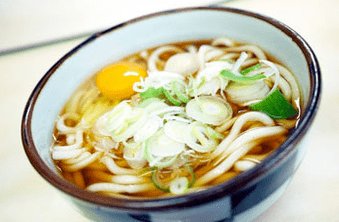
Although Miso soup is very spicy in itself, it can be seasoned with a few spices.For example:
- soy sauce
- A little like lime
- Japanese Wostershire sauce
- A few drops of sesame oil
- A little ginger and / or chili pepper powder.
- You can also cut fresh ginger and / or pepper into thin slices and leave in soup.
Tip:For many ingredients, you will have to go to the Asian store, but you can buy fresh onions, mushrooms, kohlrabi and CO in regional markets.
Tofu and other soy products are now also manufactured in other countries.
JapaneseEat:
- Rice, fish (green and cooked), vegetables, all and algae
- Small portions
- Various foods (up to 30 different per day)
- For breakfast soup, fish, rice, vegetables
- Fresh seasonal raw products
Almost do not eat desserts do not eat bread
Drink mainly green tea
Do not feel oil, use only a little vegetable oil
They go a lot and go on a bike
Three best products
Rice/fish (algae)/soy (tofu)
Drink: Green tea
And another Japanese secrets
Want to become a thinner 12 cm waist?- If so, do these airways!
Important!
- Do every day!
- Do before breakfast!
- Never hurry!
- The feet fall at a comfortable distance to each other.The roads, of course, "look" forward.
- Move body weight to the back of the leg, straighten the front.
- Inhale for 3 seconds.
- Exhale for 7 seconds.Relax the muscles.Draw your hands.
Do the exercise at the beginning of 3 minutes, then increase the time to 10 minutes.
















































































